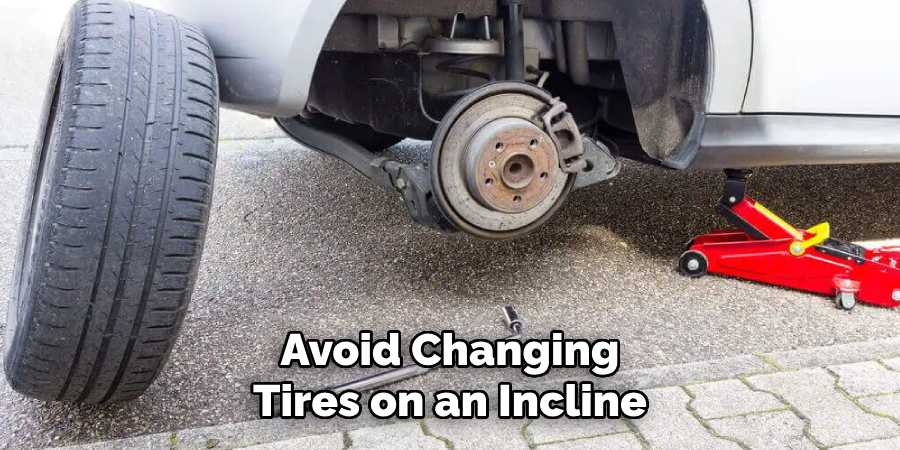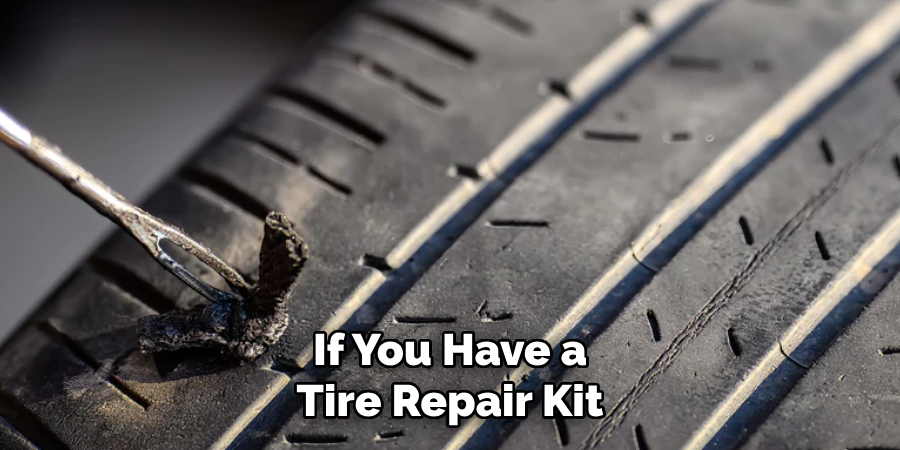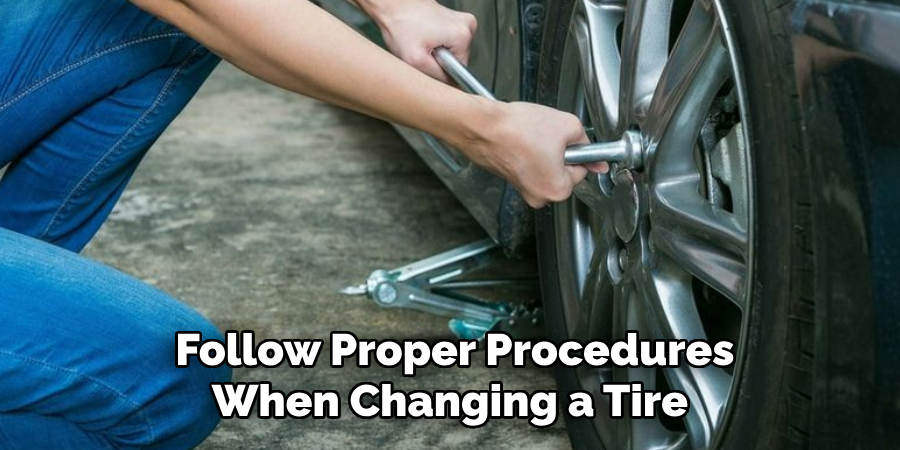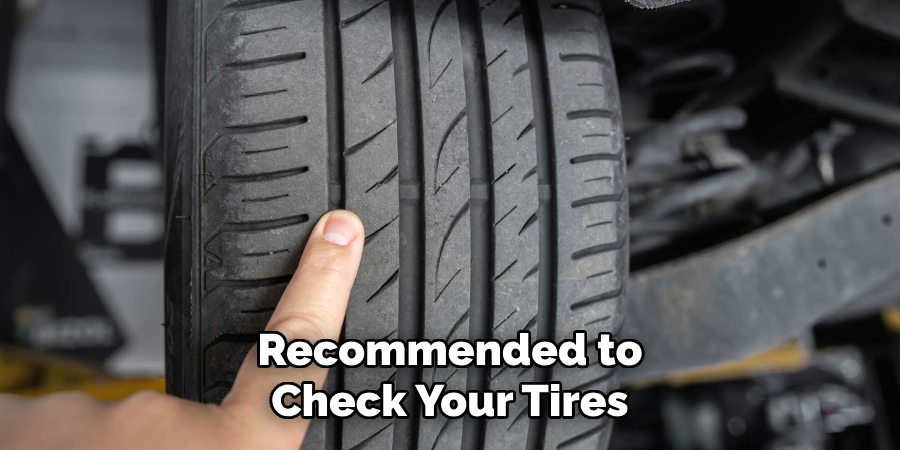Have you ever walked out to your car in the morning only to discover that someone deflated your tires overnight? It’s a terrible feeling. As I walked out to my car last weekend I noticed two of my tires were completely flat, with slashes along the sidewall. At first, I was angry, wondering who would do such a thing.

But then panic set in as I realized I had no idea how to fix slashed tires. With a busy day ahead and places to be, I frantically searched online for solutions but most articles just told me to call roadside assistance or take it to a mechanic.
That wasn’t going to cut it for me since wait times were hours long. So I rolled up my sleeves and decided to attempt fixing them myself. While it wasn’t easy as a novice, I was able to get the tires changed and safely back on the road. Now I want to share my method for fixing slashed tires as a do-it-yourself project, to help others who find themselves in a similar panic-inducing situation.
What Causes Slashed Tires?
Before we dive into the steps for fixing slashed tires, it’s important to understand what may have caused them in the first place. Slashed tires are often the result of vandalism or intentional damage by someone. It could also be a result of driving over sharp objects on the road, such as broken glass or nails. It’s important to note that slashed tires are different from punctured or flat tires, as they have a cut along the sidewall which makes it impossible for air to stay in.
Tools You’ll Need
To fix slashed tires, you’ll need a few tools handy. Most of these can be found in your car emergency kit or purchased at any auto parts store. Here’s what you’ll need:
- A Spare Tire
- A Car Jack
- Lug Wrench
- Pliers or Wire Cutters
- Tire Pressure Gauge
- Tire Repair Kit (Optional)
9 Easy Step-by-step Guidelines on How to Fix Slashed Tires
Step 1: Safety First

Before you begin, make sure to park your car in a safe and stable location. Avoid changing tires on an incline or uneven surface. Turn off your engine and put on the emergency brake. You can also place a brick or wheel chock behind the tire opposite to the one you’ll be changing. The last thing you want is for your car to roll while you’re changing the tire.
Step 2: Loosen Lug Nuts
Using the lug wrench, loosen each of the lug nuts on the slashed tire. You don’t need to remove them completely at this point, just get them loose enough so that they can easily be removed once the car is lifted. If the lug nuts are too tight, you may need to use your body weight on the wrench or even jump on it to get enough force.
Step 3: Place Jack Under Car
Most cars have designated spots for where to place the jack. Consult your car manual if you’re not sure where this is. Once you’ve found the spot, place the jack under the car and begin to lift it by turning the lever. Make sure to lift the car just enough so that the tire is off the ground.
Otherwise, you risk damaging the car. It’s important to also note that you should never place any part of your body under the car while it is lifted.
Step 4: Remove Lug Nuts and Tire
Now that the car is lifted, remove all the lug nuts from the slashed tire. Keep them in a safe spot so they don’t get lost. Once removed, gently pull off the tire from the car. The tire may still be stuck due to the weight of the car, so you may need to use some force. If the tire is still not budging, try hitting it from behind with your foot.
Step 5: Inspect the Slashed Tire
Take a close look at the slashed tire and assess the damage. If the sidewall cut is less than an inch, you can try to repair it using a tire repair kit. However, if the slash is longer than that or if there are multiple slashes, then it’s best to replace the whole tire. It’s important to always carry a spare tire in your car for situations like this. But if you don’t have a spare, make sure to call for roadside assistance or a tow truck.
Step 6: Repair or Replace Tire

If you have a tire repair kit, follow the instructions on the package to fix the cut along the sidewall. This usually involves inserting a plug into the hole and sealing it with rubber cement. If you don’t have a repair kit or if the slash is too long, then you’ll need to replace the tire. Use a lug wrench to remove the damaged tire and place it in your trunk for disposal later.
Step 7: Mount Spare Tire
Take your spare tire and line it up with the wheel studs on your car. Make sure the holes on the rim are aligned before attempting to put on the lug nuts. Slide the tire on and tighten each lug nut securely but not too tight. The tire should be able to spin freely. You may need to lower the car slightly for better access when tightening the lug nuts.
Step 8: Lower Car and Tighten Lug Nuts
Using the jack, carefully lower your car back down to the ground. Once it’s on all four wheels, use the lug wrench to fully tighten each of the lug nuts in a criss-cross pattern.
This helps distribute weight evenly and ensures the tire is securely attached to the car. It’s important to note that not tightening the lug nuts enough can cause them to come loose while driving, while over-tightening can cause damage to the wheel studs.
Step 9: Check Tire Pressure
After fixing your slashed tire, it’s important to check the tire pressure. Use a tire pressure gauge to make sure the pressure is within the recommended range for your car. If not, use an air pump at a gas station or consider purchasing one for future emergencies. Once the tire pressure is correct, you’re good to go!
Following these easy step-by-step guidelines on how to fix slashed tires can help you fix slashed tires on your own, saving you time and money. However, if at any point you’re unsure or feel uncomfortable, don’t hesitate to call for professional help or roadside assistance. Remember, safety comes first!

So always be cautious and follow proper procedures when changing a tire. With some practice, you’ll be a pro at fixing slashed tires in no time. And hopefully, you won’t find yourself in this situation too often! Happy driving and stay safe on the roads!
Additional Tips for Car Maintenance
While slashed tires are an unfortunate occurrence, there are steps you can take to potentially prevent them from happening again. Here are some additional tips for car maintenance:
- Regularly Check Tire Pressure and Tread Depth to Ensure Optimal Performance and to Catch Any Issues Early on.
- Inspect Tires Before Long Trips or When Driving in Harsh Weather Conditions.
- Avoid Driving Over Sharp Objects, Potholes, or Debris on the Road.
- Consider Investing in High-quality, Puncture-resistant Tires for Added Protection.
- Have Your Tires Rotated and Balanced According to the Recommended Schedule (Usually Every 5,000 – 7,000 Miles).
- Keep a Spare Tire in Your Car at All Times.
- Familiarize Yourself with Basic Car Maintenance Procedures, Such as Changing a Tire. This Can Save You Time and Money in Emergency Situations.
By following these tips and regularly maintaining your car, you can decrease the chances of experiencing a slashed tire and ensure your safety on the road.
Frequently Asked Questions
Q1: How Long Does It Take to Fix a Slashed Tire?
A1: The amount of time it takes to fix a slashed tire depends on factors such as your experience level, the severity of the slash, and whether you have all the necessary tools. On average, it can take anywhere from 15 minutes to an hour.
Q2: Can I Drive with a Slashed Tire?
A2: It’s not recommended to drive with a slashed tire as it can cause further damage to your car and potentially put yourself and others in danger. If you must drive, make sure to go slowly and find the nearest safe location to change the tire.
Q3: How Often Should I Check My Tires for Wear and Tear?

A3: It’s recommended to check your tires at least once a month for any visible damage or signs of wear and tear. This can help catch issues early on and prevent potential mishaps while driving. It’s also important to check before long trips or when driving in harsh weather conditions.
Conclusion
In conclusion, dealing with a slashed tire can be frustrating and inconvenient, but don’t let that discourage you from fixing the issue. Whether it was an intentional act of vandalism or simply bad luck on the road, these steps will help you get back on the road safely and efficiently.
Remember to always stay calm and assess the situation before taking any action. Start by changing your tire with a spare or calling for assistance if needed.
Then, take precautions to prevent future incidents by parking in well-lit areas and investing in tire locks. Knowing how to fix slashed tires can save you time and money in the long run, so it’s important to be prepared for such situations.
And finally, try to have a positive attitude about the whole experience – after all, it’s just another life lesson! Thank you for reading and we hope this guide has been helpful in navigating through this stressful situation. Drive safe!

About
JeepFixes Team is a skilled author for Jeep Fixes, bringing 6 years of expertise in crafting a wide range of jeep fixes. With a strong background in jeep fixes work, JeepFixes Team’s knowledge spans various types of fixtures, from decorative pieces to functional hardware, blending precision with creativity. His passion for jeep fixes and design has made him a trusted resource in the industry.
Professional Focus:
Expert in Jeep Fixes : JeepFixes Team aesthetic specializes in creating durable and innovative jeep fixes, offering both appeal and functionality. His work reflects a deep understanding of jeep fixes techniques and materials.
Sustainability Advocate : He is dedicated to using sustainable practices, ensuring that every fixture is crafted with eco-friendly methods while maintaining high-quality standards.
In his writing for jeep fixes, JeepFixes Team provides valuable insights into the latest trends, techniques, and practical advice for those passionate about jeep fixes, whether they are professionals or DIY enthusiasts. His focus on combining artistry with engineering helps others discover the true potential of jeep in design.
